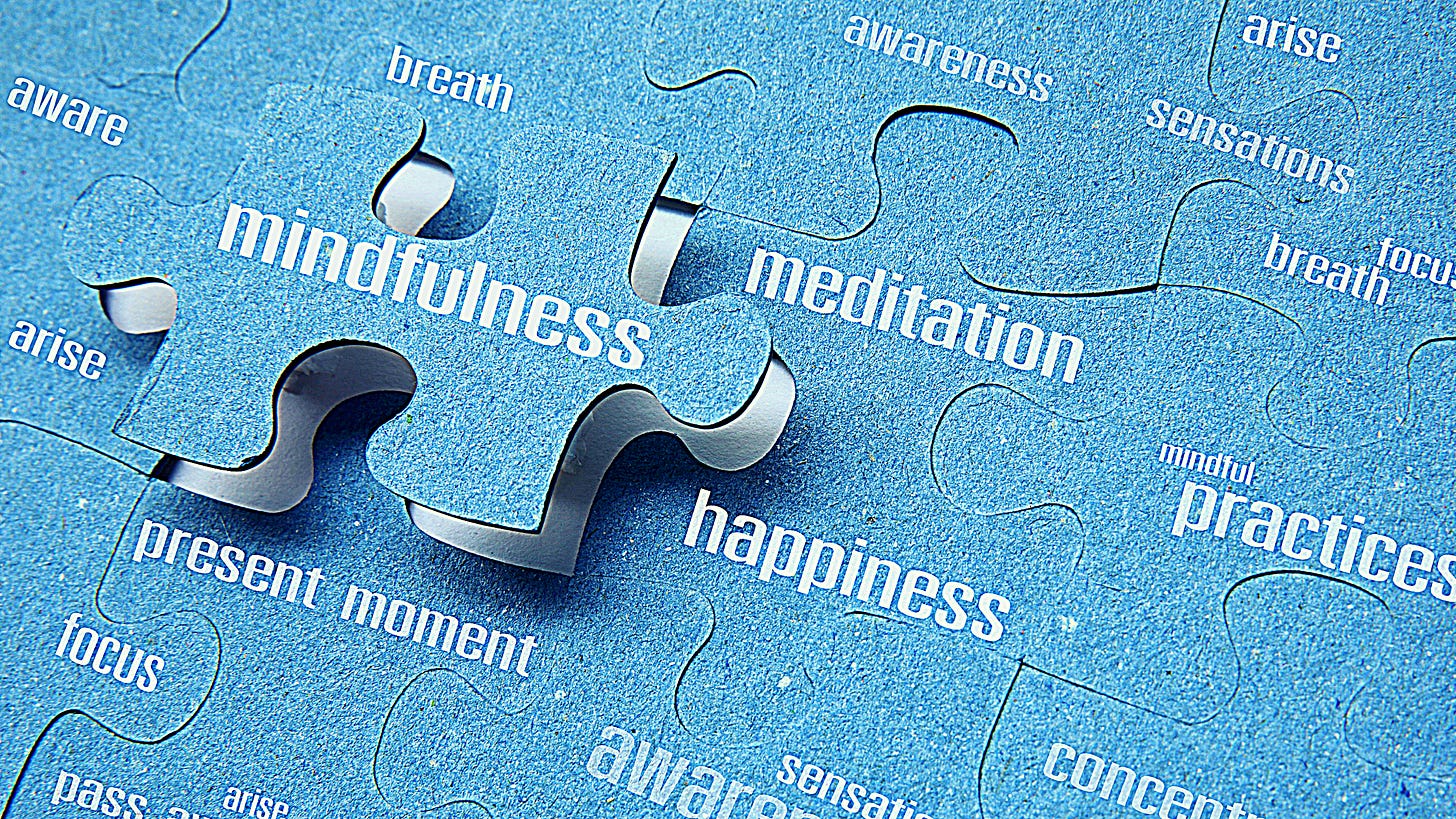
Go ALL In With Mindfulness (Connecting the Pieces)

The past 9 newsletters can best be seen as a starting point of an endless journey towards living a mindful life. Throughout the past several weeks, you were able to learn about & practice many essential key processes that underly mindfulness.
Given what you know now, you can see how all the different processes (attention & the now, automaticity, judgment, acceptance, goals, compassion, the ego) that mindfulness involves work together.
In this email, we will connect all the different processes together to visually see how we can integrate and continue to integrate mindfulness in daily life.
So let’s get into it….
Here’s the LOC breakdown for you to PREVIEW what you’re getting in this email (at a glance):
Mindful Insights
In this section, you will find:
(1) Do you struggle with making your goals a reality? Do you set goals but fail to reach them because you easily get lost in the sauce? Try this strategy that I use and that works for me— Implementation Intentions. Based on my personal experiences & of actual implementation, I recognize that this is & can be for you too, an effective & very powerful way to turn goals into action. (2) Buddy “Goal” System— another strategy to help you achieve your goals. (3) Body Scan Meditation
Mindful Weekly Challenge
Mindful integration exercise—the goal of this weeks challenge is to help you integrate everything we learned thus far when it comes to mindfulness.
Mindful Approach
This week we dive into the integration stage to connect the pieces all together. Based on what was discussed in the few weeks prior, in regards to the 8 pillars of mindfulness, this weeks topic can help us to fully understand & integrate mindfulness into our lives.
Mindful Reflection
“Wherever you are, be all there reflection”
Mindful Insights
1) Implementation Intentions
People often fail to act on their good intentions. Despite their best intentions to eat more healthily, to be more physically active, or to declutter the house, people often fail to do so.
The ‘gap’ between intention and action is common. This intention-action gap is observed even when intentions are strong and urgent action is required (such as the need to lose weight for medical reasons).
This suggests that motivation alone is not sufficient. If motivation is not the critical element, how do you bridge the intention-action gap?
Implementation Intentions (‘if-then’ planning) are an effective strategy for turning goals into action.
Instructions
Step 1: Understanding the purpose and the structure of an Implementation Intention
Implementation Intentions are “if-then” plans. Research has found that they are an effective strategy to turn goals into action. In other words, forming an implementation intention will help you carry out the behavior you intend.
Step 2: State your intention
Being fully present, sit with yourself & explicitly state your intention of whatever it is you’re looking to cultivate in your life.
My intention is: (fill in the blank)
Step 3: Plan when, where, and how
Now write down or say out loud a statement of how you will act towards a goal in the form of: “If X happens, then I will do Y.”
X can be a time, place, or event. Y is the specific action they will take whenever X occurs.
Examples of ‘if-then’ plans:
During the next week, I will partake in at least 30 minutes of vigorous exercise on [day] at [time of day] at/in [place].
If I eat chocolate for an afternoon snack, then I’ll stop at the supermarket on the way home and buy some vegetables for dinner.
If I haven’t slept well two nights in a row, then I will have a quiet evening in (with laptop off by 8 pm) and will go to bed early at 10 pm.
If I have to work late today and I don’t have time to go to the gym, then I’ll wake up 30 min earlier tomorrow and go for a run before breakfast.
Try it out—
If:
happens, then I will do:
2) A “Goal” Buddy Strategy
This PDF is a strategy technique you can use to help strengthen your ability to fulfill your goals. Within the PDF you will find a full in depth breakdown to what this means and what this strategy would look like to take on. Hope this helps.
(click the picture below to access the pdf)

3) Body Scan Meditation
A couple of weeks ago, I created & shared a body scan meditation (shortened version for beginners). This week, I’m sharing that meditation again. Practice along the session & see what comes up for you. Remember to go into the session with ease, non judgement, and try your best to be present in the moment.
Mindful Challenge
Mindful Integration Exercise — We very often think about the past or future when listening to another person talk. When we do that, we are actually not listening at all.
Instead of being in the moment and fully absorbing both the words and content from the speaker, other activities occur in our minds such as planning what we are going to say back or thinking about what we should have said.
In this exercise, you are going to practice and experience what mindful listening means. So this exercise will require participation from another person you feel safe with & trust.
I invite you to think of one of the most important things you learned during the last few weeks newsletters in regards to the 8 pillars. Or if you prefer, think of a topic that can pose as a framework to get a conversation going.
Giving yourself at least 2-5 minutes, share insights with the person you’re using as the participant to what you learned: being fully present in the moment. And when they give feedback or when it’s there turn to speak, see if you can fully listen to the feedback instead of thinking of ways in which how you’re going to respond.
Before you start sharing or engaging in conversation, see if you can direct attention to how it feels to speak, how it feels to talk about your personal experiences. Try your best to be in the moment & observe your own thoughts, feelings and body sensations both when talking and listening.
The goal of this exercise is twofold.
First, this exercise invites us to reflect on the past nine newsletters.
Second, this exercise familiarizes us with mindful listening.
Mindful listening is an important skill. In general, people thrive when they feel fully “heard” and “seen”. Mindful listening means listening completely to the other person. Instead of interrupting the person, trying to tell one’s own story or thinking ahead, the listener is fully present in this moment. The listener listens as though he/she is “over there” with the speaker.
In other words, mindful listening involves a form of self-regulation in which the focus on the self is set aside.
Mindful listening can create an inner stillness in both parties as the speaker may feel free of the listener’s preconceptions and prejudices, and the listener may be free of inner chatter.
Questions to reflect on—
How did you feel when speaking during the exercise?
How did you feel when listening during the exercise?
Did you notice your mind-wandering?
If so, what was the distraction?
What helped you bring your attention back to the present?
Did your mind judge while listening to others?
If so, how did “judging” feel in the body?
How did your body feel right after speaking?
What are you feeling right now?
What would be possible if you practiced mindful listening with each person that you spoke with?
Do you think mindful listening would change the way you interact with others?
Mindful Approach
“In order to continue integrating mindfulness into your life to effectively promote well-being, a sustained & consistent practice is required.”
The past few weeks, I shared the 8 pillars of mindfulness with you to help support you in understanding what mindfulness is, what it entails, and how to use the processes in order to integrate mindfulness into your life.
[What are your thoughts? Given what you know now, would you say mindfulness makes more sense to you? Is there still something you need further clarity on? How have your practices been? Do you still experience any struggles or roadblocks you’d like to work through? Let me know. Respond to this email, create a thread on the private Facebook group to form discussion, or send me a DM. I’m here to help always, especially for you.]
The reasoning to why we need to create a daily practice for ourselves is that mindfulness cannot be regarded as quick or isolated solution to our problems.
The primary aim of mindfulness is to cultivate a mindset that is characterized by open awareness and observation.
Instead of occasionally trying to use mindfulness techniques to cope with setbacks or stress, the goal is to achieve an overall change in ones relationship with thoughts, emotions, and sensations.
Mindfulness involves (continual) awareness of automatic processes and maintaining open and focused awareness, in all kinds of situations, both easy and difficult, & in ones private and work lives.
In other words, increasing mindfulness involves a continual process that creates an everlasting change in perception, behavior, & cognition, rather than a temporary bandage of strategies that help you become present in the here & now only when times get rough.
In order to change (problematic) automatic patterns of behavior and thinking, continual awareness may be required. And this makes sense because changing a habit that has been active for many years takes time.
“Mindfulness involves (continual) awareness of automatic processes and maintaining open and focused awareness, in all kinds of situations, both easy and difficult, & in ones private and work lives.”
For instance, if you’re someone who strongly identifies with your negative, judgmental thoughts, you will need time to become aware of the various manifestations and consequences of these thoughts, both at work and at home, and practice coping with them in a mindful way as soon as they are noticed.
In the same light, if you’re someone who is almost always constantly in the “doing-mode,” rushing through activities and experiencing difficulties with psychological detachment from work, you will need time and practice to restore balance with the “being” mode again. Because remember—> a “mindful” mindset involves an overall tendency to pay “complete attention to the experience on a moment to moment basis.
If you are considering a continued mindfulness practice, what is the most important reason for doing so?
In what ways will you continue to integrate mindfulness into your daily life? What kind of exercises will you continue doing?
What are you going to do to make sure you will stick to your intentions?
Mindful Reflection

Artwork by Chris Durao (resilience)
“Wherever you are, be all there.” I love this quote. It resonates with me because for the longest time, I struggled with this notion of being fully present where you are. It wasn’t until a couple of years ago that I was able to create a shift for myself to start being more present and not so much in my head. But before that, it was tough. So I can imagine how challenging it can be for you if you’re currently going through that struggle of feeling like you can’t get out of our own heads and are fighting this strange battle with yourself.
You can overcome this old way of being though. Truly. It’s possible. Because it was possible for me.
What truly helped me escape the imprisonment of my mind was the realization that I’m not my mind. I am instead the observer of my mind.
Thoughts come and go. Like clouds. They aren’t ours to own. They are ours to experience.
This helped me because I was able to then have the same thoughts that crippled me before, but with this new insight, thoughts no longer effected me as much as they once did. Thoughts started hitting differently.

“Thoughts come and go. Like clouds. They aren’t ours to own. They are ours to experience.”
Now don’t get me wrong, this realization wasn’t the only thing that brought me to who I am today. Throw therapy into the mix, as well as finding new ppl to connect with that aligned more with who I truly am, experimenting with psychedelics, meditation and time & then you have the recipe to what created the current 2020 version of Victor.
Inner work is WORK lol. I’m grateful though for it all. The good, the bad, the ugly. It alll needed to happen to create who I am today—An individual who experiences full presence (for the most part) wherever he is.
Thank you so much for taking the time to check out this weeks newsletter my friend. I’m grateful that you’re here. And I’m grateful to be apart of your journey and to witness you showing up for yourself every week.
Sending you positive vibes, good energy, and so much love.
Until next week,
namaste.
**NOTE: if you haven’t already, you can join the private group on FB where we can get conversations going & talk about important & meaningful topics or ideas as it relates to us or the world. Plus, I’d rather talk too you, not at you.
Join the group —
ZEN SPACE
I’m Victor.

Or the mindfulness guy.
I aim to find calm & balance in my life through inspirations between alternative Eastern traditional Buddhism styles of meditation & mindfulness, as well as modern secular styles too.
I believe that we ALL have the capacity to create greatness for ourselves & I’m willing to show you how.
you can find me hanging out on:
Instagram —@2whomitmayconcrn_
Facebook — @iamzenrn
TikTok — @iamzenrn
Join the fam!
ZenRn Facebook Community
Enjoyed the email?
Tell your friends or loved ones! Share with someone you feel may greatly benefit off just having some positive content in their email box every Monday. (& it would also mean the world to me).
Want More?
Visit the Zen Rn website for more mindful treats >>
https://www.iamzenrn.com
~I’m here to hold space for you because you deserve it.~
Victor Padilla



